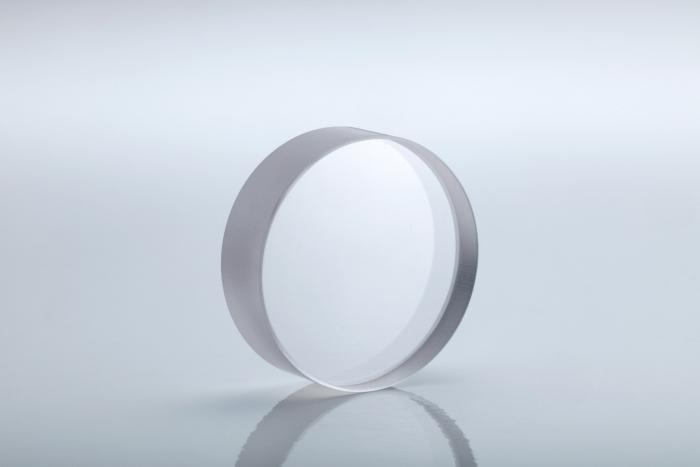Barium Fluoride Window (BaF2) 16mm dia x 1mmthk
| Diameter (mm) | 16 |
|---|---|
| Material | Barium Fluoride |
| Coating | Uncoated |
| Thickness (mm) | 1 |
| Type | Standard |
Barium Fluoride (BaF₂) is a crystalline compound of barium and fluoride used in optical applications in the NIR, VIS and MWIR spectrums. Barium Fluoride is resistant to high energy radiation, performing well in dry temperatures up to 800°C, but transmission in the Vacuum UV (VUV) degrades over time in a moist atmosphere and the material is susceptible to water corrosion at 500°C.
Barium Fluoride is ideal for use as a VUV window where high radiation resistance is required from, for example, gamma and x-ray. Other applications include thermography and medical thermology equipment, laser, and astronomy.
Barium Fluoride transmits at over 90% between the 0.2-10μm spectrum beyond which transmission decreases, reaching 0% at about 0.18µm and 14µm. It is a relatively soft material with a hardness of HK82, and can be BBAR coated for use in the 0.8-2.5µm, 3.0-5.0µm and 1.0-5.0 ranges.
Knight Optical supply a range of quality BaF₂ windows available between 13mm diameter to 38mm diameter direct from stock. Our stock windows may be resized at short notice to fit customer's individual requirements.
Contact our multilingual technical sales team and discover how Knight Optical’s high quality Barium Fluoride windows and service can improve your instrumentation and supply chain experience
Note: Stectroscopic Standard Grade rectangular windows may be cut from the same sized diameter, so may have curved edges as a result. These types also come in drilled (with 30mm spacing)/undrilled versions for use alone or as a pair.
Mounting into cells.
Edging down to smaller sizes.
